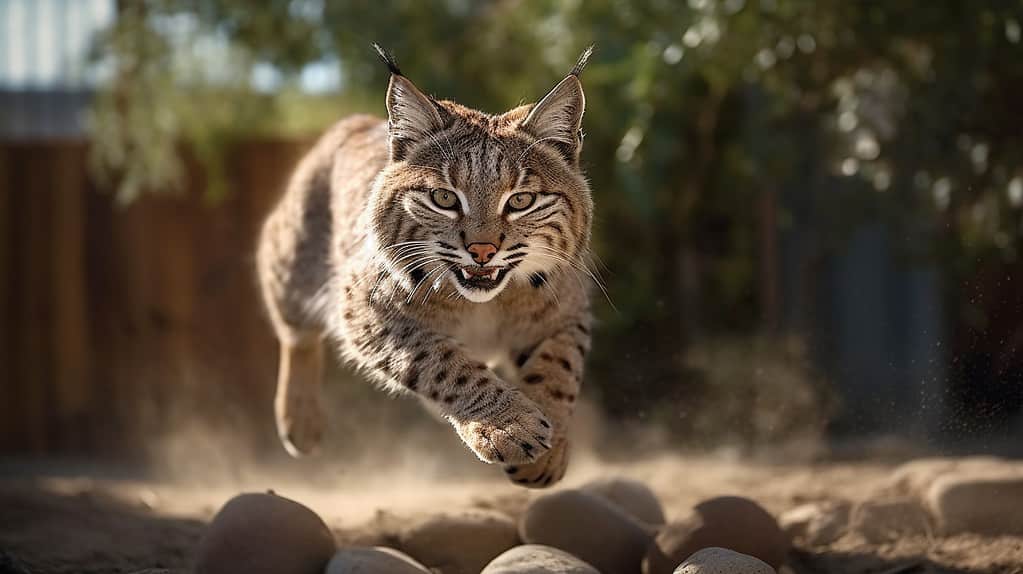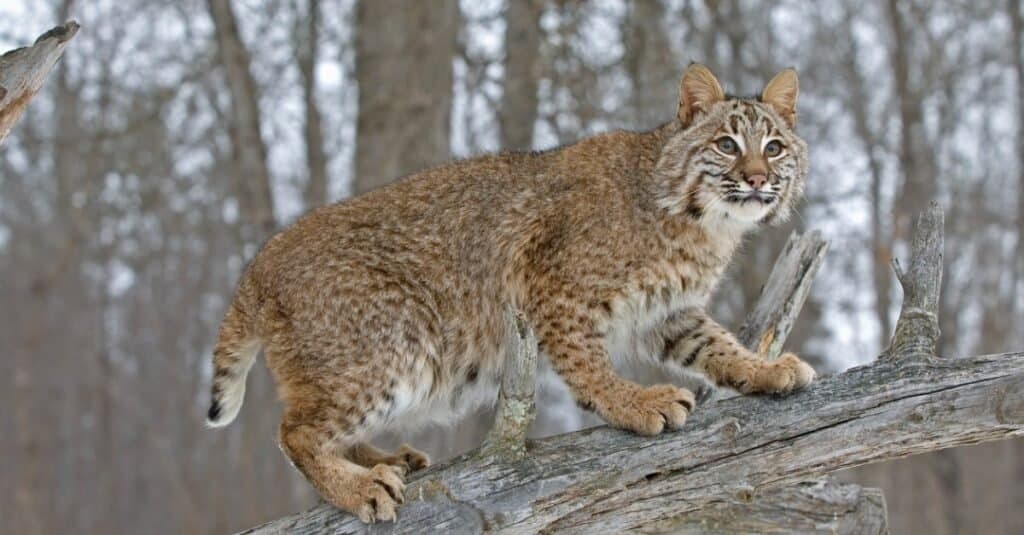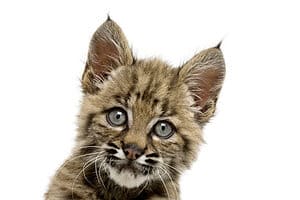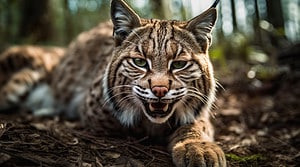When you are a hungry bobcat, any location is a potential stalking ground, and that includes a golf course. This clever predator has worked out that geese congregate here, feeding on the seeds and vegetation, and that makes it an ideal hunting ground.
Click the Link Below to See This Hunter in Action
Bobcats Hunting Geese on the Golf Course

Bobcats are double the size of a domestic cat.
©iStock.com/twildlife
This short clip was taken on a golf course – the golfers had taken a break from their games to admire the skill of this predator. It starts with the bobcat scaling the side of the sand bunker. It soon becomes apparent that there is a flock of geese on the green above. Then, with lightning speed, the bobcat races towards the flock, who all take to the air.
At first, it is impossible to tell if any of the geese have been caught. But then the video cuts to a close-up of the bobcat biting into a goose before picking it up and running away to enjoy its meal in peace. The tactics have paid off!
Bobcats Hunting and Prey

Bobcats are found in several habitats across the southern half of North America. They are easily recognizable from their small “bobbed” tail. They are about double the size of domestic cats and tend to shy away from humans. However, there is evidence that they do frequent urban areas. Studies have shown that they are quite happy to exploit a highly urbanized habitat, but they tend to stick to agricultural-type areas and avoid roads. This would explain the presence of this individual on the golf course.
As global urbanization encroaches on natural habitats – many species are having to adapt. The presence of geese would be an attraction for bobcats, who are carnivores and solitary hunters. Their diet is made up mainly of hares, rabbits, mice, and birds. Although they will also eat lizards sometimes. If food is scarce, they would attempt to take on a deer and will eat carrion as well. They usually hunt at dusk, dawn, and night and do this by silently stalking their prey before pouncing with huge force. As we see here, this tactic is highly effective with a flock of geese!
Is It Normal For Bobcats to Eat Geese?

The mighty bobcat is one of nature’s most fearless predators, making them one of the few native creatures bold enough to kill and eat venomous snakes.
©iStock.com/JohnPitcher
Bobcats are solitary hunters, and they generally hunt alone, although sometimes they hunt in pairs. They hunt mainly at night but also during the day, and they mainly hunt small mammals, such as rabbits, rodents, and hares. They will certainly eat a goose if they can catch one.
Bobcats are nocturnal animals, and they spend most of their daylight hours sleeping. During the night, they are active, searching for food, and they often roam large areas of their habitat.
Bobcats live in a variety of habitats, including forests, deserts, and grasslands. They prefer areas with dense vegetation, but they can also be found in open areas, such as mountain meadows and fields.
Bobcats typically mate during the winter months, and the females will have litters of up to four kittens in the spring. The kittens are born blind and helpless, and they stay with their mother for about nine months before they become independent.
Bobcats communicate using a variety of vocalizations, such as hissing, growling, and yowling. They also use scent marks to communicate and to mark their territory.
In general, bobcats are shy and reclusive animals, and they tend to avoid humans. They will defend themselves if threatened, but they will usually try to flee before attacking.
How Big Are Bobcats?

Newborn bobcat cubs only weigh a couple of ounces.
©Mark Kostich/iStock via Getty Images
Bobcats are medium-sized wildcats native to North America, and the size of these animals can vary depending on their stage of life. Adult bobcats typically reach lengths between 24-49 inches and can weigh up to 40-50 pounds, while kittens are much smaller and usually weigh between one and two pounds.
There is a size difference between male and female bobcats, with males typically being larger in size. Male bobcats can reach lengths of up to 49 inches and can weigh up to 40-50 pounds, while female bobcats usually reach lengths of 24-35 inches and can weigh up to 35-40 pounds.
Bobcats grow in size throughout their life and will reach their full size between the ages of 3-4. During this period of growth, bobcats will put on weight quickly as they transition from a diet of milk to a diet of meat.
Newborn bobcats are very small and usually weigh between three to five ounces. They reach lengths of up to six inches in the first few weeks of life, with their eyes opening around two weeks after birth. By the time they’re four months old, bobcat kittens will have grown significantly and can weigh up to one or two pounds. Bobcats are solitary animals that live mainly on their own, but mothers stay close by until their young become independent at around nine months old.
Thank you for reading! Have some feedback for us? Contact the AZ Animals editorial team.








